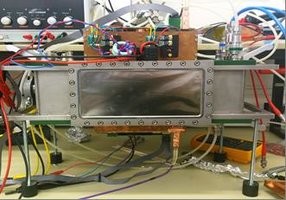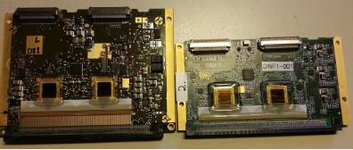Magnetic rigidity
Particle identification at the Super-FRS will be achieved by using precise tracking detectors to measure positions and angles at the focus. Due to the high-resolution achromatic mode of the Super-FRS, highly homogeneous transmission tracking detectors are crucial to tag the momentum of the ion/fragment beam.
A GEM-TPC detector, whose design combines two major concepts in modern gas-filled detectors, the Time Projection Chamber (TPC) and the Gas Electron Multiplication (GEM), is suggested as high-rate capable tracking detectors. Three detector generations (prototypes) have been constructed and tested in 2011, 2012 and 2014 with relativistic ion beams [1]. The lastest has a twin configuration, i.e. two GEM-TPC detectors flipped (with the electric fields of the two field cages in opposite directions) in one housing box, to allow for higher tracking efficiency. The GEMEX1c electronics was used to test. In 2016 a new version of the digital readout electronics GMX based on NYXOR and DNF boards was develped and tested with ion beams [2].
[1] F. Garcia et al., GSI Scientific Report (2014) p. 140.
[2] F. Garcia et al., Nucl. Inst. and Meth. A 884 (2018) 18.
A further step in the development of the Supe-FRS gas detecors has been realized in 2019.The integration of new charge sensitive preamplifiers (CSA) with high dynamic range (up to 5 x 10^4) and low gain (3 mV/fC) into the readout of the GEM-TPC detector prototype allowed to investigate the performance of the detector in the 238U-ion measurement. A new board based on AWAGS - chip (Amplifier With Adaptive Gain Setting) designed at GSI-EE with 256 channels was produced and tested in collaboration with PANDA. The single-strip anodic-signals were digitalized using the FEBEX electronics. The FEBEX DAQ was combined with the FRS tracking detector readout for obtaining position resolution measurements at different GEM amplifications.
Partners: Helsinki IP, Jyvaskyla Uni, CU Bratislava and GSI.





